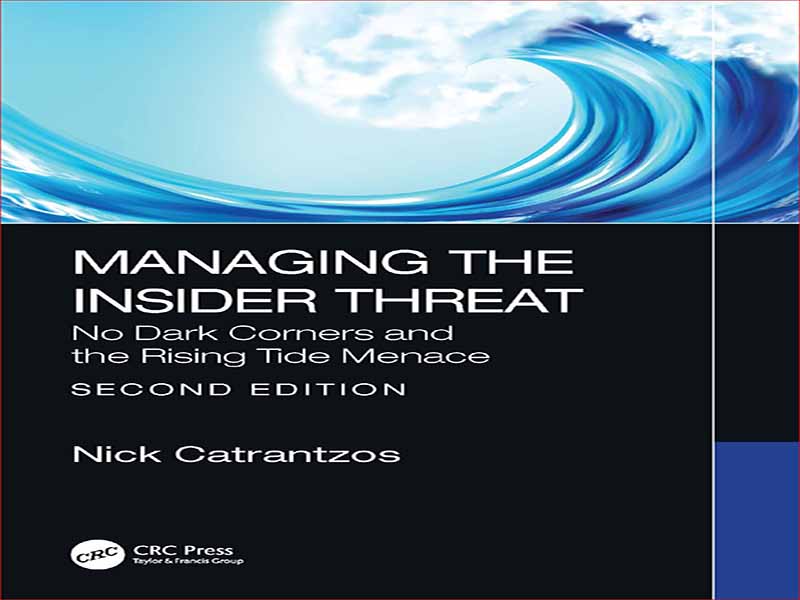- عنوان کتاب: Managing the Insider Threat
- نویسنده/انتشارات: Nick Catrantzos
- حوزه: مدیریت مخاطرات
- سال انتشار: 2023
- تعداد صفحه: 419
- زبان اصلی: انگلیسی
- نوع فایل: pdf
- حجم فایل: 5.96 مگابایت
سال ها می گذرد و دنیا عوض می شود. یا حداقل اولویت ها تغییر می کند. خطرات دیروز، که امروز تازگی خود را از دست می دهند، به نقاط پرت فردا تبدیل می شوند. با معطوف شدن توجه به تهدید آخرالزمانی روز، دفاع هایی که در پی آن خطرات تازه ایجاد می شوند، قدرت خود را از دست می دهند. و به نظر می رسد چنین تهدیدهایی در طول زمان چند برابر می شوند. با این حال، دیوانگی انسان، حتی زمانی که مظاهر آن با وسایل جدید، پنهان شده با استتارهای متفاوت، اما اهداف یکسانی را دنبال می کند، همچنان ادامه دارد. ارتباطات، وسایل نقلیه و روابط بین فردی نیز همینطور است. وسیله تغییر می کند، اما مقصد ثابت می ماند. همینطور با تهدیدهای خودی. در فاصله زمانی پس از چاپ اول این کتاب، نگاه مردمی و اولویت ها تغییر کرده است. شبح در حال کاهش حملات تروریستی مانند 11 سپتامبر 2001، در پی بلایای طبیعی و توجه رسانه ها به موارد دیگر کاهش یافت. برای مدتی، ظهور داعش و حملات جهادی مرتبط با جمعیت غیرنظامی ناآگاه این توجه را دوباره برانگیخت. با این حال، در نهایت، تروریست ها و قدرت آنها برای ایجاد تأثیر نامتقارن با حمله به عنوان خودی های متخاصم، شروع به از دست دادن اولویت در مقابل مجموعه ای از تهدیدات کردند، که همگی به عنوان “وجودی” شناخته می شوند. همه این تهدیدها برای پهنای باند، تأمین مالی و کاهش دامنه توجه رقابت میکردند. و دامنه آنها بسیار گسترده بود: تغییرات آب و هوایی، عدالت اجتماعی، اعتراض خشونت آمیز، سیاست انرژی، قطبی شدن سیاسی – همه در رقابت برای برتری. علاوه بر این، هر کدام قهرمانانی را پیدا کردند که اصرار داشتند، از آنجایی که علت معین یک تهدید «وجودی» است، اولویت اول را به حذف هر چیز دیگری می طلبید. در غیر این صورت عذاب حتمی در پی خواهد داشت و بقیه علل به هر حال دیگر اهمیتی ندارند. در همان زمان، هنگامی که این منظره رقابتی هیولاهای بلندی را در مقابل شیشههای جلوی شخصی فرا میخواند، ظاهراً رویدادهای دیگر ارسال تهدیدهای داخلی به آینه عقب را توجیه میکرد. به هر حال، به نظر میرسید که احساسات عمومی تأیید میکرد، برنامههای تهدید خودی همگام با پیشرفتهایی در الگوریتمها و فناوریهای نظارتی تکثیر شده بودند. موعظه های تهدید داخلی به اندازه کمربند ایمنی در همه جا فراگیر شد. و در حالی که هر دو ایده خوبی به نظر می رسیدند، هر دو از ارائه ضمانت کوتاهی کردند. تهدیدهای داخلی همچنان ظاهر می شوند، همانطور که تصادفات اتومبیل بدون توجه به ابزارهای دفاعی و تلاش های آموزنده همچنان رخ می دهد. برخی از خطرات هرگز به طور کامل از بین نمی روند، حتی زمانی که ظرفیت ما برای ماندن در حالت آماده باش همیشگی از بین می رود.
The years pass, and the world changes. Or, at least, priorities change.
Yesterday’s perils, losing their novelty today, become tomorrow’s outliers. Defenses spawned in the wake of those fresh perils lose their potency as attention shifts to the apocalyptic threat of the day. And such threats seem to multiply over time. Yet human rascality persists, even when its manifestations surface by new means, concealed by different camoufage but pursuing the same ends. So it is with communications, means of locomotion, and interpersonal relations. The means change, but the destination remains the same. So, too, with insider threats.
In the interval since the frst edition of this book, popular gaze and priorities have shifted. The receding specter of terrorist attacks such as September 11, 2001, diminished in the aftermath of natural disasters and cascading media attention to other things. For a time, the rise of ISIS and jihadi-connected attacks on unsuspecting civilian populations rekindled that attention. Eventually, though, terrorists and their power to deliver asymmetric impact by attacking as hostile insiders began to lose priority to a panoply of threats, all characterized as “existential.” All these menaces competed for bandwidth, funding, and collapsing attention spans. And their reach was vast: climate change, social justice, violent protest, energy policy, political polarization – all competing for primacy. Moreover, each found champions insisting that, since the given cause constituted an “existential” threat, it demanded top priority to the exclusion of all else. Otherwise, certain doom would follow, and the rest of the causes would cease to matter anyway.
At the same time, as this competitive landscape summoned towering monsters in front of personal windshields, other events apparently justifed consigning insider threats to the rearview mirror. After all, popular sentiment seemed to affrm, insider threat programs had proliferated in lockstep with advances in monitoring algorithms and technologies. Insider threat sermons became as ubiquitous as seatbelts. And, while both seemed like good ideas, both fell short of providing guarantees. Insider threats continue to surface, just as automobile accidents continue to happen, regardless of defensive tools and instructive efforts. Some dangers never go completely away, even as our capacity for remaining on perpetual alert dissipates.
این کتاب را میتوانید از لینک زیر بصورت رایگان دانلود کنید:
Download: Managing the Insider Threat




































نظرات کاربران